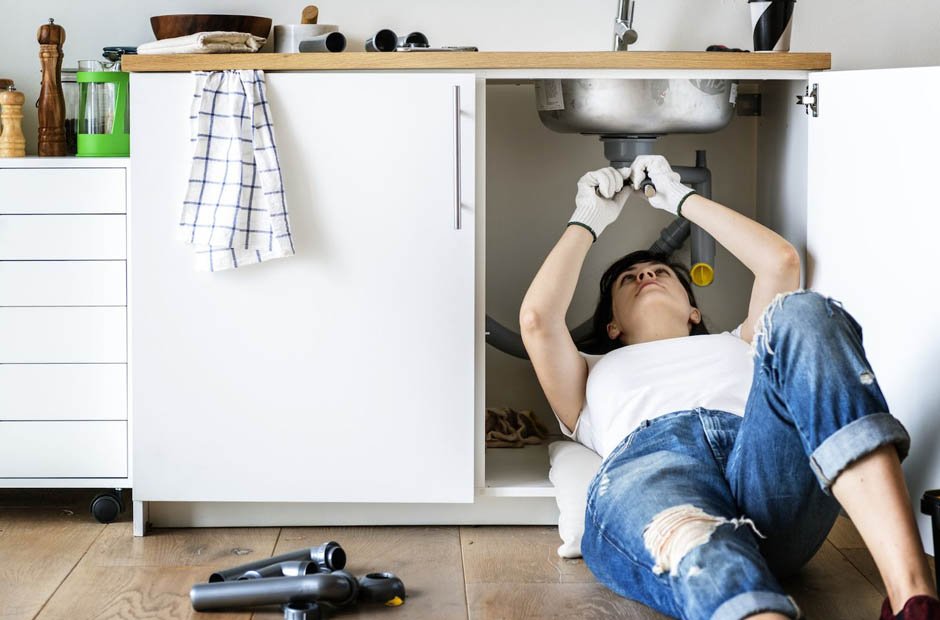The rise of YouTube tutorials and home improvement shows has convinced many homeowners that nearly every repair job can be tackled with enough determination and the right tools. While this DIY enthusiasm has led to some impressive success stories, it’s also created a trail of expensive disasters that could have been avoided with a simple phone call to a professional.
The appeal of handling repairs yourself makes perfect sense. There’s satisfaction in fixing something with your own hands, potential cost savings, and the convenience of working on your own schedule. But some projects cross the line from ambitious to dangerous, and others require specialized knowledge that takes years to develop properly.
Electrical Work: Where Mistakes Can Kill
Electrical repairs top the list of jobs that homeowners should approach with extreme caution. What seems like a simple switch replacement can turn into a house fire or electrocution hazard when done incorrectly. The problem isn’t just getting shocked – though that’s certainly a risk – it’s creating hidden dangers that won’t show up until months or years later.
Basic tasks such as replacing outlets or light fixtures might seem manageable, but even these can become complicated quickly when older wiring or unusual configurations are involved. This is where having access to experienced professionals becomes essential. When dealing with electrical issues, many homeowners find that consulting with a qualified handyman San Jose residents trust, can help assess the situation properly and determine when projects require licensed electrician involvement.
Modern electrical codes exist for good reasons, and they change regularly. What was acceptable wiring practice ten years ago might not meet current safety standards. Professional contractors stay current with these changes, while most homeowners don’t even know the codes exist until something goes wrong.
Plumbing: Small Leaks Become Big Problems
Plumbing repairs often start as simple projects that spiral into major headaches. A dripping faucet seems straightforward until you discover the water has been slowly damaging the cabinet underneath for months. What began as a quick fix becomes a full cabinet replacement plus potential floor repairs.
The real danger with DIY plumbing isn’t usually the immediate failure – it’s the slow leaks that develop weeks later behind walls or under floors. These hidden problems can cause thousands of dollars in damage before anyone notices. Professional plumbers understand pipe materials, fitting compatibility, and proper sealing techniques that prevent these delayed disasters.
Water pressure issues present another common DIY pitfall. Homeowners often assume low water pressure means cleaning or replacing showerheads and faucets, but the actual cause might be failing pipes, water heater problems, or municipal supply issues that require different solutions entirely.
Structural Changes: When Walls Fight Back
Removing walls or making structural modifications ranks high on the list of projects that look easier than they actually are. Load-bearing walls aren’t always obvious, and removing the wrong wall can cause serious structural damage that’s expensive to repair and potentially dangerous to live with.
Even non-load-bearing walls can hide important utilities that create problems when disturbed. Electrical wiring, plumbing lines, and HVAC ducts often run through walls in ways that aren’t obvious until you start cutting. Professional contractors know how to locate these utilities before starting work and can reroute them safely when necessary.
Building permits and inspections add another layer of complexity to structural projects. Many homeowners don’t realize which projects require permits, and doing unpermitted work can create problems when selling the house or filing insurance claims after damage occurs.
HVAC Systems: Comfort and Safety Combined
Heating, ventilation, and air conditioning systems involve electrical components, gas connections, and refrigerants that can be dangerous when handled incorrectly. What looks like a simple furnace repair might involve gas leaks, carbon monoxide risks, or electrical hazards that aren’t obvious to untrained homeowners.
Modern HVAC systems also include complex controls and diagnostic systems that require specialized tools and knowledge to service properly. Attempting repairs without understanding these systems often leads to additional damage that makes professional repairs more expensive than they would have been originally.
Refrigerant handling requires EPA certification for good reasons. These chemicals can be harmful to both people and the environment when released improperly, and working with pressurized systems requires understanding safety procedures that most homeowners don’t possess.
When DIY Makes Perfect Sense
Not every home repair requires professional help. Painting, basic cabinet hardware installation, simple landscaping, and many cleaning and maintenance tasks are well within most homeowners’ capabilities. The key is understanding the difference between projects that teach valuable skills and those that create expensive problems.
Successful DIY projects typically involve reversible changes, use standard materials and techniques, and don’t affect major home systems. Installing new cabinet pulls, caulking around tubs and showers, or replacing air filters all fall into this category.
The Real Cost of DIY Disasters
Here’s the thing that most homeowners don’t consider when weighing DIY versus professional repairs: the cost of fixing mistakes often exceeds the original repair cost significantly. A botched electrical job might require rewiring entire circuits. Failed plumbing repairs can lead to water damage that costs thousands to remediate.
Insurance coverage adds another consideration. Many policies don’t cover damage caused by improper DIY repairs, leaving homeowners responsible for the full cost of both the original problem and any additional damage created during failed repair attempts.
Time investment also factors into the real cost equation. Projects that professionals complete in hours can stretch into weekends or longer for homeowners learning as they go. When factoring in the value of time spent, professional repairs often cost less than the DIY alternative.
Making Smart Decisions About Home Repairs
The decision to tackle repairs yourself or call professionals should consider both the immediate project complexity and potential consequences of mistakes. Simple, low-risk projects make excellent learning opportunities, while complex or potentially dangerous repairs justify professional costs through improved safety and reliability.
Getting quotes from professionals before deciding on DIY approaches provides valuable perspective on both project complexity and fair pricing. Sometimes the cost difference is smaller than expected, making professional help an obvious choice.
Look, nobody’s saying you should call a pro for every little thing around the house. There’s real satisfaction in fixing something yourself. But there’s also nothing wrong with admitting when a project is beyond what you want to deal with – especially when the consequences of messing up could be serious.
The best approach is probably somewhere in the middle. Handle the stuff that makes sense for your skill level, but don’t let pride push you into projects that could create bigger headaches down the road. Your future self will thank you for making the smart call.



